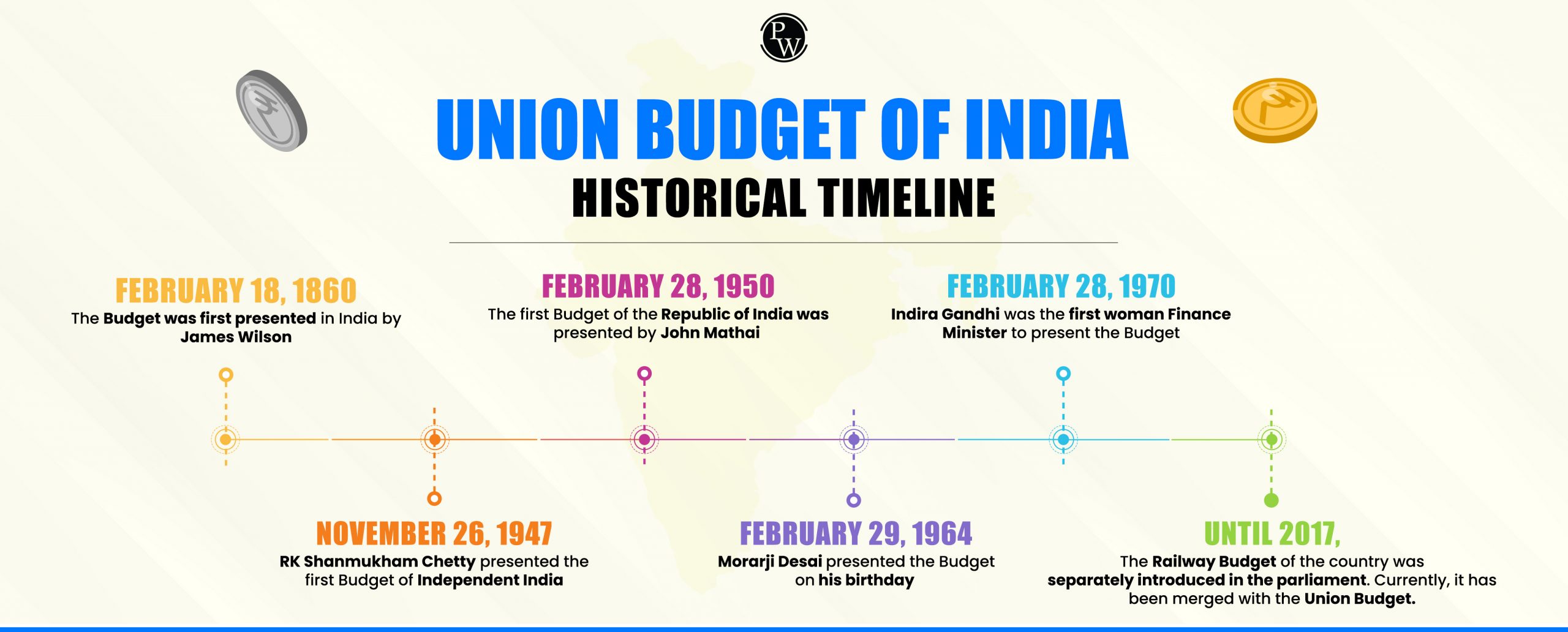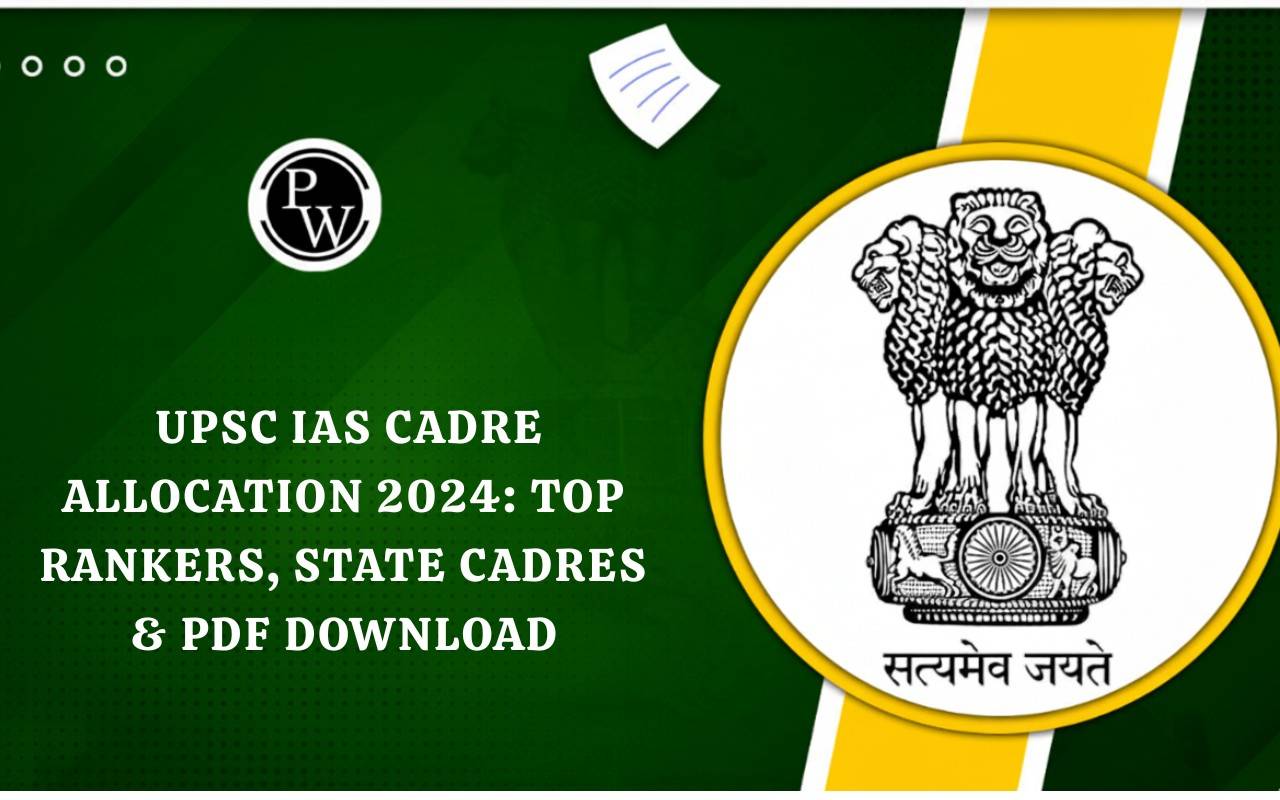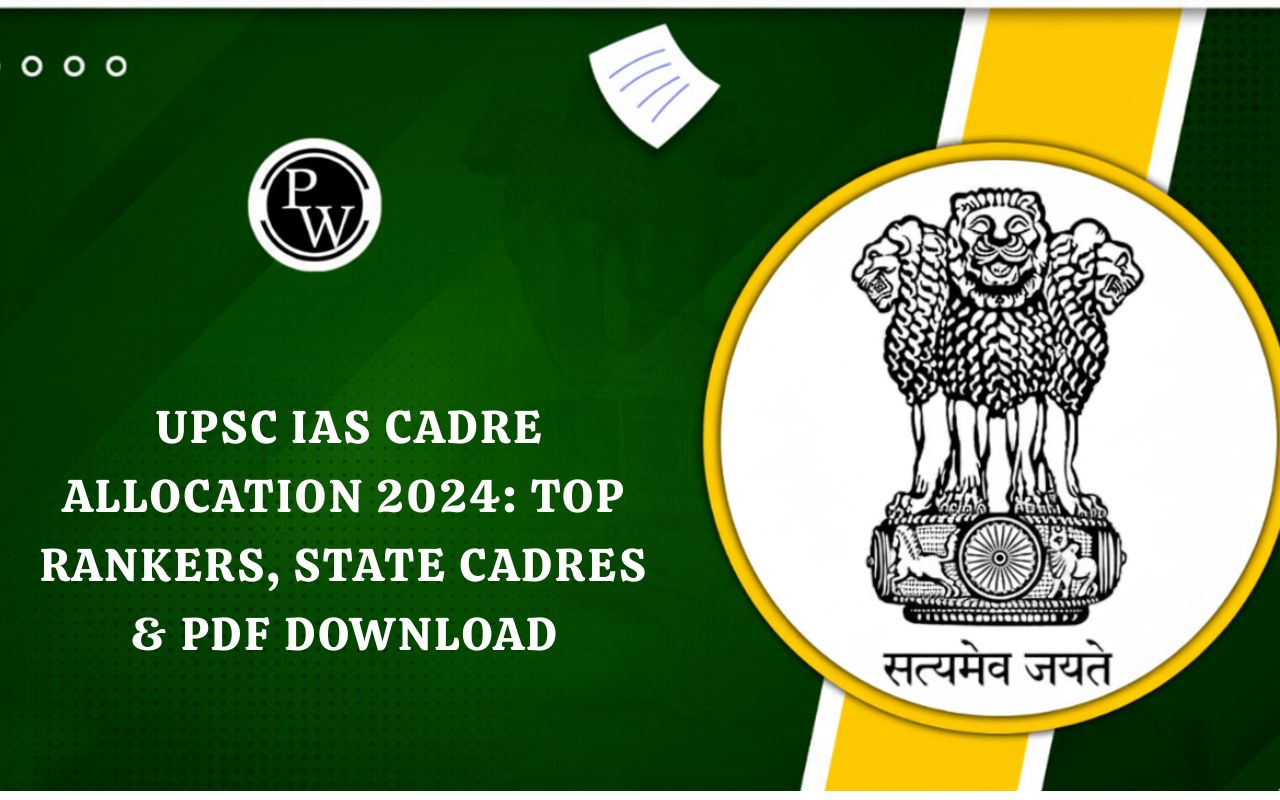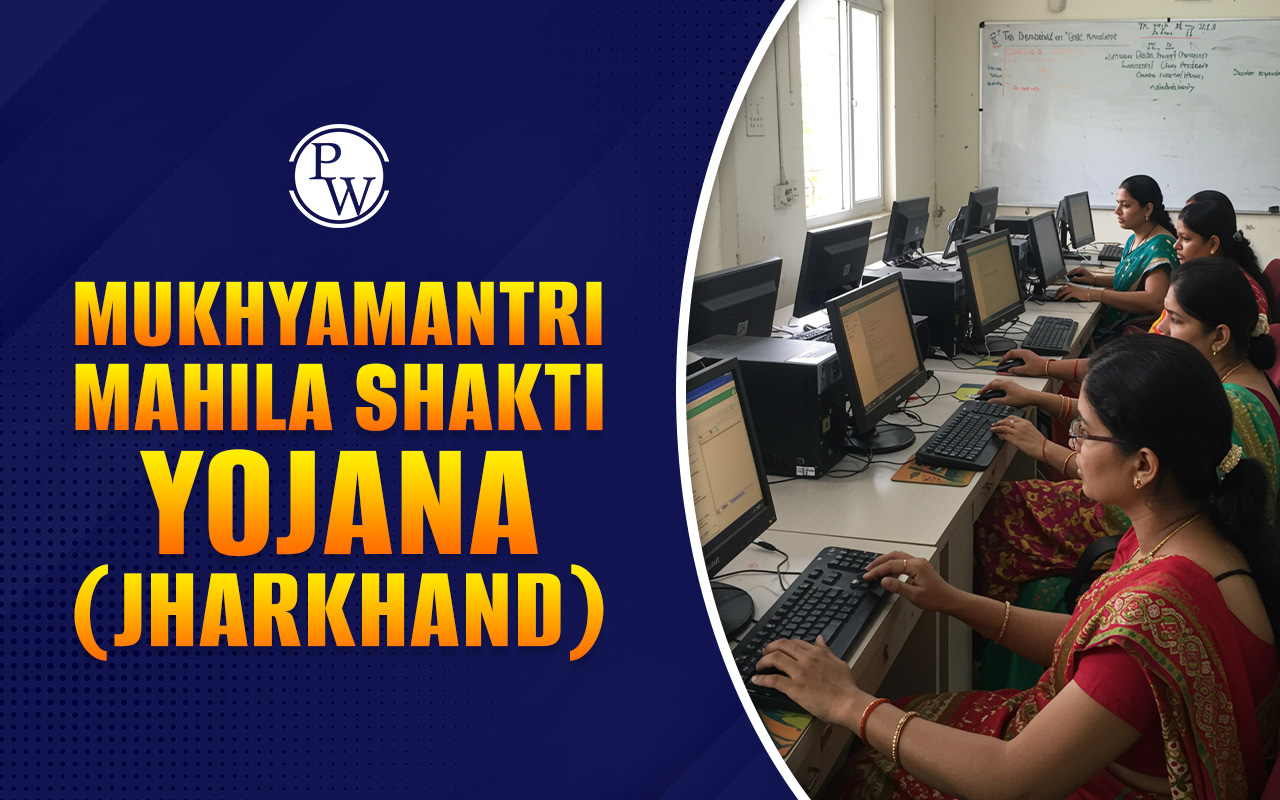
Union Budget 2025 is an important document that was presented in Lok Sabha on February 1, 2025 . This document contains information on the government's financial plans, including tax policies, spending allocations, and reforms for various sectors.
Candidates must not miss the Budget 2025 highlights and exam-relevant facts. Also, make sure to analyze the budget’s impact on various sectors and policies, as this knowledge will be invaluable for your UPSC exam. Download the Budget 2025 PDF from here.Union Budget 2025-26
Finance Minister Nirmala Sitharaman presented the Union Budget 2025-26 in the Lok Sabha on February 1, 2025 . This was her eighth consecutive budget (six full and two interim budgets), setting the economic direction for the coming years. The Union Budget 2025-26 theme was “Sabka Vikas” and had the following broad principles :- Zero-poverty;
- 100% good quality school education;
- Access to high-quality, affordable, and comprehensive healthcare;
- 100% skilled labour with meaningful employment;
- 70% women in economic activities; and
- Farmers making our country the ‘food basket of the world’.
Budget 2025 PDF
The President of India is responsible for presenting the budget through the Finance Minister. The term "budget" isn’t used in the Constitution; instead, it refers to the "Annual Financial Statement " in Article 112. The Union Budget for 2025 highlights the government's plans, revenue, and expenditure for the upcoming fiscal year. Here is how the budget evolved over the years: This Budget 2025, was prepared by the
Department of Economic Affairs (DEA)
, Ministry of Finance is available at '
https://www.indiabudget.gov.in
. To download the key highlights of Union Budget 2025, click on the below link:
Understand:
Difference Between Economic Survey and Budget
This Budget 2025, was prepared by the
Department of Economic Affairs (DEA)
, Ministry of Finance is available at '
https://www.indiabudget.gov.in
. To download the key highlights of Union Budget 2025, click on the below link:
Understand:
Difference Between Economic Survey and Budget
Budget 2025 Highlights
The Union Budget for the fiscal year 2025-26 includes several key initiatives and allocations aimed at stimulating economic growth and addressing various socio-economic challenges. Here are the major highlights:Budgetary Allocations & Estimates
Revised Estimates (2024-25) are as follows:
| Total Receipts (Excluding Borrowings) | ₹31.47 lakh crore |
| Net Tax Receipts | ₹25.57 lakh crore |
| Total Expenditure | ₹47.16 lakh crore |
| Capital Expenditure | ₹10.18 lakh crore |
Budget Estimates (2025-26) are as follows:
| Total Receipts (Excluding Borrowings) | ₹34.96 lakh crore |
| Net Tax Receipts | ₹28.37 lakh crore |
| Total Expenditure | ₹50.65 lakh crore |
Fiscal Consolidation
Smt. Sitharaman announced that the Revised Estimate for the f iscal deficit in 2024-25 is 4.8% of G DP, while the Budget Estimate for 2025-26 is projected at 4.4% of GDP.1st Engine: Agriculture
- The Budget introduces the ' Prime Minister Dhan-Dhaanya Krishi Yojana' to boost productivity, diversify crops, enhance storage, improve irrigation, and provide credit across 100 districts.
- A new 'Rural Prosperity and Resilience' programme will address underemployment in agriculture.
- A 6-year "Mission for Aatmanirbharta in Pulses" with other measures to support vegetable, fruit, and cotton productivity.
- Increase in Kisan Credit Card loan limits from Rs. 3 lakh to Rs. 5 lakh.
2nd Engine: MSMEs
- Budget highlighted MSMEs as a key driver of development, contributing 45% of exports, and announced enhanced investment and turnover limits to improve scale, technology, and capital access.
- A new scheme will provide term loans up to Rs. 2 crore over the next 5 years for 5 lakh women, Scheduled Castes, and Scheduled Tribes first-time entrepreneurs.
- The government will launch a scheme to establish India as a global hub for toys under the 'Made in India' brand and implement a National Manufacturing Mission to promote "Make in India" across industries.
3rd Engine: Investment
- 50,000 Atal Tinkering Labs will be set up in schools, broadband will reach rural schools/health centres, and Indian language digital books will be provided.
- Five National Centres of Excellence for skilling and a Centre of Excellence in AI with ₹500 crore will be established, and gig workers will receive identity cards and healthcare benefits.
- A ₹ 1.5 lakh crore loan scheme for states, a ₹10 lakh crore Asset Monetization Plan, and a ₹1 lakh crore Urban Challenge Fund for city development.
- ₹20,000 crore allocated for private-sector R&D, a National Geospatial Mission for urban planning, and the Gyan Bharatam Mission to conserve 1 crore manuscripts.
4th Engine: Exports
- An Export Promotion Mission, supported by the Ministries of Commerce, MSME, and Finance, will help MSMEs access global markets, with a unified platform, BharatTradeNet (BTN), for trade documentation and financing.
- The government will boost domestic manufacturing to integrate with global supply chains and support the electronic equipment industry in leveraging Industry 4.0 opportunities.
- A National Framework will promote Global Capability Centres in emerging tier 2 cities.
- Infrastructure and warehousing for air cargo, including for high-value perishable horticulture, will be upgraded.
Financial Sector Reforms and Development
- The government is committed to 'Ease of Doing Business ' by simplifying compliance, expanding services, strengthening regulations, promoting investment, and decriminalizing outdated legal provisions.
- The FDI limit in insurance will be raised from 74% to 100% for companies investing the entire premium in India.
- A light-touch, trust-based regulatory framework will be introduced, with a High-Level Committee to review non-financial sector regulations and improve ease of doing business.
- Key initiatives include launching an Investment Friendliness Index for states , enhancing financial regulations under the FSDC, and decriminalizing over 100 provisions through Jan Vishwas Bill 2.0.
Union Budget 2025 Income Tax Slabs
In the Union Budget 2025-26, significant changes were announced regarding income tax slabs, primarily aimed at providing relief to middle-class taxpayers. The previous tax slabs were as follows:| Taxable Income Slab (Rs) | Tax Rate |
| 0 - 3 lakh | Nil |
| 3 - 7 lakh | 5% |
| 7 - 10 lakh | 10% |
| 10 - 12 lakh | 15% |
| 12 - 15 lakh | 20% |
| Above 15 lakh | 30% |
| Taxable Income Slab (Rs) | Tax Rate |
| 0 - 4 lakh | Nil |
| 4 - 8 lakh | 5% |
| 8 - 12 lakh | 10% |
| 12 - 16 lakh | 15% |
| 16 - 20 lakh | 20% |
| 20 - 24 lakh | 25% |
| Above 24 lakh | 30% |
Key Terms Related to Union Budget
It’s crucial to understand budget terminology for exams, especially for UPSC. Here are some key terms that aspirants must know:- Revenue Receipts: Income received by the government through taxes, fines, or services, with no change in assets or liabilities.
- Capital Receipts: Money received from selling government assets or borrowing, leading to changes in assets or liabilities.
- Revenue Expenditure: Regular spending like salaries and subsidies, with no impact on assets.
- Capital Expenditure: Spending that creates or modifies assets, such as infrastructure development.
- Deficit Budget: When the government’s expenditure exceeds its income, leading to a shortfall.
- Surplus Budget : When the government’s income exceeds its expenditure, resulting in excess funds.
- Direct Taxes: Taxes like income tax, where money is directly paid by individuals to the government.
- Indirect Taxes: Taxes like GST, where the money flows from the consumer to the business and then to the government.
- Disinvestment: Selling PSUs or other government assets generates capital receipts.
- Borrowing: When the government borrows money, it gets a receipt but also takes on a liability to repay it.
- Recovery of Loans : If the government recovers money from loans it has given out, the asset (loan) decreases, and the government receives money, which counts as a capital receipt.
Budget 2025 Importance for UPSC Prelims
The Union Budget has immense significance for upcoming UPSC Prelims. Here’s why:- Direct Questions in Prelims: Questions on government schemes, tax reforms, or new allocations may come from the Budget.
- Economic Survey Insights : The Budget complements the Economic Survey, which is essential for understanding India’s economic performance.
- Policy Context: It provides a snapshot of the government’s focus areas, helping in subjects like Economy, Polity, and Environment.
- Interdisciplinary Relevance: Topics like sustainable development, healthcare, and infrastructure can overlap with UPSC Mains.
UPSC Prelims 2014: With reference to the Union Budget, which of the following is/are covered under Non-Plan Expenditure?
|
Union Budget 2025 FAQs
Is the Union Budget released every year?
Yes, the Union Budget is released annually by the Finance Minister of India.
When will the Budget 2025 be presented?
The Budget 2025 was presented on 1st February 2025.
What is new tax regime under Budget 2025?
Individuals earning up to INR 12 lakh will be exempt from income tax under the new regime. For salaried individuals, the threshold increases to INR 12.75 lakh when accounting for a standard deduction of INR 75,000.
How can aspirants link the Budget to the UPSC syllabus?
Aspirants can connect Budget topics to subjects like Economy, Polity, and Environment. Key policies often overlap with syllabus points.
What sections of the Budget should UPSC aspirants focus on?
Focus on sectors like agriculture, health, education, infrastructure, and environment.
🔥 Trending Blogs
Talk to a counsellorHave doubts? Our support team will be happy to assist you!

Check out these Related Articles
Free Learning Resources
PW Books
Notes (Class 10-12)
PW Study Materials
Notes (Class 6-9)
Ncert Solutions
Govt Exams
Class 6th to 12th Online Courses
Govt Job Exams Courses
UPSC Coaching
Defence Exam Coaching
Gate Exam Coaching
Other Exams
Know about Physics Wallah
Physics Wallah is an Indian edtech platform that provides accessible & comprehensive learning experiences to students from Class 6th to postgraduate level. We also provide extensive NCERT solutions, sample paper, NEET, JEE Mains, BITSAT previous year papers & more such resources to students. Physics Wallah also caters to over 3.5 million registered students and over 78 lakh+ Youtube subscribers with 4.8 rating on its app.
We Stand Out because
We provide students with intensive courses with India’s qualified & experienced faculties & mentors. PW strives to make the learning experience comprehensive and accessible for students of all sections of society. We believe in empowering every single student who couldn't dream of a good career in engineering and medical field earlier.
Our Key Focus Areas
Physics Wallah's main focus is to make the learning experience as economical as possible for all students. With our affordable courses like Lakshya, Udaan and Arjuna and many others, we have been able to provide a platform for lakhs of aspirants. From providing Chemistry, Maths, Physics formula to giving e-books of eminent authors like RD Sharma, RS Aggarwal and Lakhmir Singh, PW focuses on every single student's need for preparation.
What Makes Us Different
Physics Wallah strives to develop a comprehensive pedagogical structure for students, where they get a state-of-the-art learning experience with study material and resources. Apart from catering students preparing for JEE Mains and NEET, PW also provides study material for each state board like Uttar Pradesh, Bihar, and others
Copyright © 2025 Physicswallah Limited All rights reserved.
Get App









